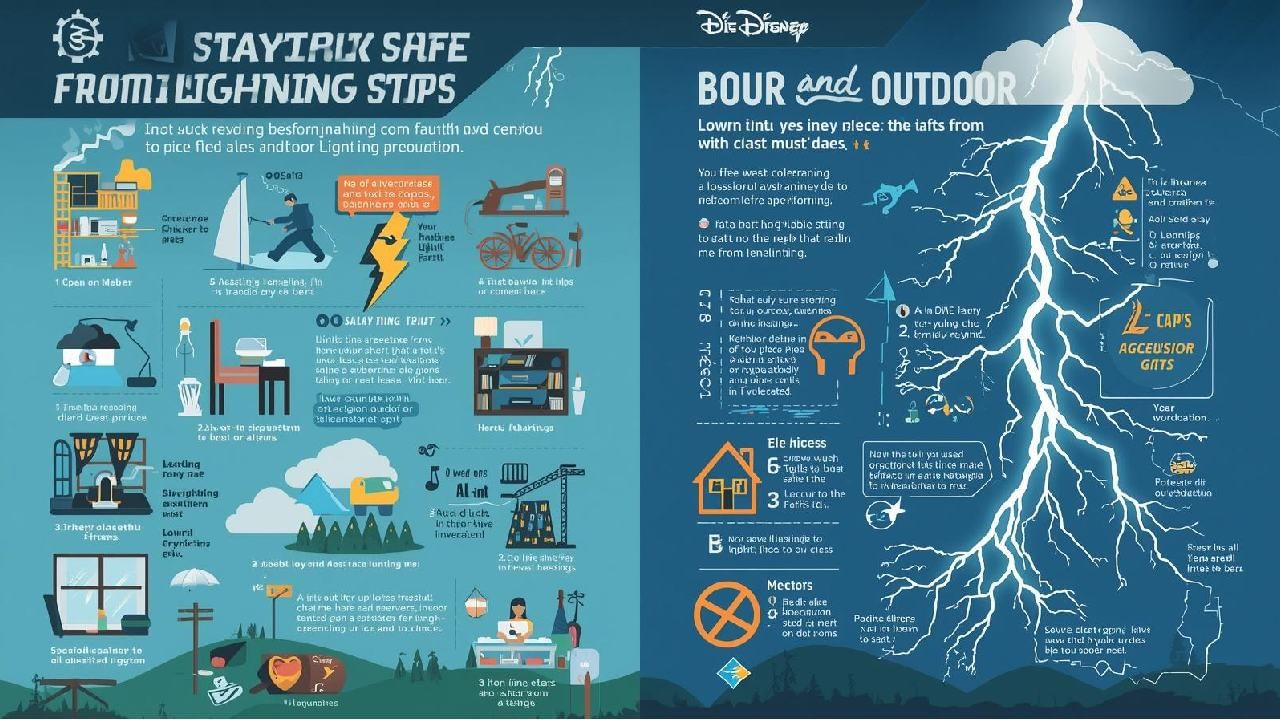Lightning is a powerful and unpredictable force of nature. While spectacular to watch from a safe distance, it poses a significant threat to anyone caught outdoors or even indoors without the right precautions. Understanding how to protect yourself can be the difference between life and death. This guide covers essential safety measures and crucial first aid steps.
1. Outdoor Safety: Your Immediate Action Plan
When thunderstorms are forecast, the best strategy is to avoid outdoor activities altogether. However, if you are caught outside, follow these steps immediately.
-
Seek Proper Shelter Immediately: The safest place is inside a substantial, fully enclosed building or a hard-topped metal vehicle like a car, van, or bus. Once inside the vehicle, close all windows and avoid touching any metal surfaces.
-
If There is No Shelter: If you cannot reach a safe building or vehicle, avoid being the tallest object in the area. Do NOT take shelter under an isolated tree, a cell phone tower, or on a mountain ridge.
-
The Lightning Crouch: Crouch down on the balls of your feet to minimize your contact with the ground. Keep your feet together, tuck your head, and cover your ears with your hands. Do not lie flat on the ground.
-
-
Avoid These Specific Hazards:
-
Water Bodies: Immediately get out of and away from ponds, lakes, swimming pools, and the ocean.
-
Conductive Objects: Stay away from barbed wire fences, power lines, windmills, and metal pipes.
-
Group Separation: If you are in a group in an open area, spread out to prevent multiple casualties from a single strike, which would leave no one to administer first aid.
-
2. Indoor Safety: It’s Not Just About Being Inside
Being indoors does not automatically make you safe. Lightning can travel through wiring and plumbing, so you must take precautions even inside your home or building.
-
Avoid Water: Do not bathe, shower, wash dishes, or have any contact with running water during a thunderstorm.
-
Stay Away from Electronics: Do not use corded appliances, including landline telephones, televisions, and desktop computers. The electrical surge from a lightning strike can travel through the wires. Cellular or cordless phones are safe to use.
-
Avoid Concrete Surfaces: Do not lean against concrete walls or lie on concrete floors. Lightning can travel through the metal rebar inside concrete.
-
Stay Inside: Do not go out onto the terrace or balcony, and stay away from windows and doors.
-
Wait It Out: The danger of lightning persists even as a storm passes. Wait at least 30 minutes after the last clap of thunder before venturing outside.
3. First Aid for a Lightning Strike Victim
A person struck by lightning does not carry an electrical charge and is safe to touch. Your immediate action can save their life.
-
Check the Scene: Ensure the area is safe from continued lightning risk before approaching.
-
Call for Emergency Help: Dial for an ambulance immediately.
-
Check for Vital Signs: Check if the person is breathing and has a pulse. Lightning often causes cardiac arrest.
-
Begin CPR Immediately: If the person is not breathing and has no pulse, begin Cardiopulmonary Resuscitation (CPR). Do not delay. Push hard and fast in the center of the chest.
-
Use an AED: If an Automated External Defibrillator (AED) is available, use it as soon as possible.
-
Treat for Shock: Keep the victim warm and comfortable until medical help arrives.
Proactive Measure: Download a reliable lightning alert app like the “Damini” app (developed by the Indian Institute of Tropical Meteorology) to get real-time information and early warnings about lightning risks in your area.
